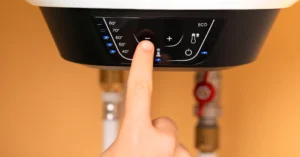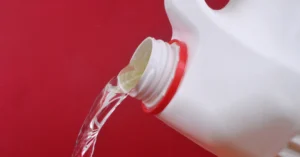If you manage or own commercial space in San Diego, chances are that “backflow prevention for San Diego commercial properties” has come up in your plumbing or maintenance discussions. Backflow might sound technical, but at its core, it’s about protecting your drinking water from contamination.
Having a solid prevention setup can safeguard both your property and the people who rely on your water supply. In the sections below, you’ll find a friendly, clear overview of how backflow occurs, why it matters, and how to keep your system up to code in San Diego.
Understand why backflow matters
You might be wondering: “Does any of this actually apply to me?” The short answer is yes. Whether you run a small corner café in Point Loma (92106) or manage a large apartment complex in Chula Vista (91910), water quality is crucial to daily operations. Plus, you’re legally responsible for ensuring that drinking water remains safe from contamination.
What is backflow?
Backflow is the unwanted reversal of water flow that can happen when there’s a change in pressure in your plumbing system. Normally, water travels from your main supply line into your faucets and fixtures. However, if the pressure in those supply lines drops or fluctuates, water can flow backward. That reverse flow can carry contaminants with it—think fertilizers, chemicals, or bacteria—and force them into your clean water pipes.
Who is most at risk?
You might assume backflow is just a risk for massive industrial complexes, but even a simple commercial property can be at risk:
- Restaurants with dishwashers, sinks, and hose connections (especially those requiring grease trap maintenance)
- Hotels or apartment buildings with dynamic water systems
- Office sites that have irrigation lines for landscaping
- Car wash facilities, laundromats, and more
Basically, if your property uses water in multiple ways (and most do), understanding backflow is essential to preventing contamination and staying on top of local regulations. The EPA provides comprehensive information on cross-connection control for commercial properties.
Recognize how backflow occurs
To get straight to the point, backflow happens when water needs somewhere else to go. If the main water supply pressure drops, water from your property’s pipes might start flowing in the opposite direction, pulling unclean or tainted water into otherwise clean pipes.
Cross-connections explained
A cross-connection is where your clean water supply meets a potential source of contamination. Classic examples include hoses left submerged in buckets of chemicals or irrigation systems that use city water to feed sprinklers near pesticides. When these points aren’t protected or monitored, even small pressure changes can force water to route backward, bringing in unwanted pollutants.
Professional camera line inspection services can help identify potential cross-connection points in your commercial plumbing system.
Pressure changes in plumbing
Pressure changes happen in various ways, many of which are surprisingly common:
- Large water main breaks
- Fire hydrant usage that redirects water flow
- Sudden spikes in demand (for example, everyone in the building showering at peak times)
- Improperly maintained booster pumps or valves
When such events happen, your plumbing may experience a drop or surge in pressure. If there isn’t a reliable backflow prevention method in place, the system can draw contaminated water back into the main supply. Professional plumbing repair services can address pressure irregularities that contribute to backflow risks.
Note the risks to health
Backflow is not only about the inconvenience of water moving in the wrong direction. The real worry is contamination—where harmful substances get pulled into the drinking water supply.
Contamination hazards
Think about what flows through some of your building’s pipes. You might have chemicals in your heating systems, soaps in dishwashers, or even landscaping fertilizers in your irrigation lines. Contaminants like these can be dangerous to anyone consuming or using the water for personal hygiene. If water is pulled backward, anyone on the same system could suffer. This can lead to issues ranging from mild stomach bugs to serious health concerns.
Legal implications
There’s a reason that “backflow prevention for San Diego commercial properties” is such a hot topic. State and local regulations require property owners to ensure water safety. If a backflow incident results in contamination, you could face:
- Fines from regulatory agencies
- Legal action if occupants or neighbors are harmed
- Damage to your property’s reputation
Local authorities, including the San Diego County Department of Environmental Health, often have stringent guidelines around backflow testing, certifications, and device maintenance to prevent these problems. Being proactive helps you avoid hefty penalties, service disruptions, and potential public relations nightmares.
Learn more about water safety emergencies in our guide on the best emergency steps to take when you discover a leak in your San Diego property.
Follow San Diego regulations
San Diego has specific rules in place to guard public water supplies from backflow. Understanding these regulations helps you protect your investment and keep your tenants, customers, or employees safe. After all, nobody wants a health department notice pinned to their door.
Testing and certification
Many localities, including San Diego County, require annual backflow testing to confirm that your prevention devices are working properly. You typically need to hire a certified backflow tester, who checks the internal parts of your prevention assemblies:
- They assess the valves and ensure the springs are working
- They measure water pressure on each side of the device
- They confirm there’s no sign of internal leakage
Once your system passes, you’ll receive a certification that you usually must file with the local water authority. The certificate acts like an official green light showing you’re meeting your obligations. The American Water Works Association provides backflow prevention guidelines for commercial properties.
Local compliance steps
Navigating compliance might feel daunting, but it’s relatively straightforward once you know the process. Typically, you:
- Identify your cross-connection points (like irrigation or fire sprinkler lines)
- Install a backflow prevention assembly approved for your property’s needs
- Have a certified tester examine the assembly after installation and yearly thereafter
- Submit your test results to the city or county
- Keep a regular maintenance schedule for your system
Choose the right prevention devices
Backflow prevention assemblies come in a few varieties. Each type is suited to different situations, depending on the level of hazard and the local plumbing setup.
Backflow assemblies and valves
A few common types of backflow assemblies include:
- Double Check Valve Assembly (DCVA): Two check valves in a single unit. Often used in low-to-medium hazard situations, like standard commercial properties without extreme chemical usage
- Reduced Pressure Zone Assembly (RPZA): Offers a higher level of protection because it includes a relief valve that discharges water if the pressure differential gets too high
- Pressure Vacuum Breaker (PVB): Ideal for preventing backflow from irrigation systems
- Atmospheric Vacuum Breaker (AVB): A simpler device, typically installed on fixtures like hose bibs, but it’s not always suitable for large commercial setups
Each assembly is designed to handle a specific risk level. For example, a property that handles chemicals or medical waste usually needs more robust backflow protection than a small retail store with just a sink and a bathroom.
Installation considerations
Before you rush out to buy a new assembly, consider these factors:
- Property type: How your water is used (irrigation, kitchens, restrooms) can dictate which device is best
- Local code: Check with San Diego officials or a certified plumber to see which assemblies are compliant in your area
- Space constraints: Some devices have specific installation angles, clearance requirements, or ventilation needs
- Maintenance: Certain assemblies need more regular checkups than others, so factor that into your plan
If you’re unsure, consult a licensed plumber or a backflow prevention specialist. They can inspect your property layout, advise on the proper device, and help you avoid compliance pitfalls.
Maintain your prevention system
Like most plumbing equipment, backflow prevention devices need occasional TLC. They stay hidden in corners of your property, and it’s easy to forget about them until something goes wrong. But a proactive tune-up schedule can save you headaches later on.
Regular upkeep tasks
Staying on top of maintenance isn’t overly complicated. You can:
- Visually inspect your device: Check for leaks, corrosion, or anything out of place
- Keep surrounding areas clear: Make sure there’s room to perform tests or repairs. Plants, debris, or storage boxes shouldn’t crowd your backflow device
- Exercise valves if recommended: Some devices benefit from periodic “exercising” (opening and closing the valves fully) to prevent them from sticking
If you’re adding any new plumbing fixtures, such as a secondary irrigation system or a remodel with additional water lines, be sure to talk to your plumber about any new backflow considerations.
Professional inspections
While quick visual checks are good practice, a certified professional should inspect your device annually—or as mandated by local codes. They’ll use specialized tools to confirm the valves are opening and closing correctly, and they’ll measure water pressure on each side. If they spot issues like seized parts or worn seals, they can handle the repairs right away. This approach not only keeps you compliant but stops small problems from turning into bigger ones down the road.
For comprehensive maintenance guidance, check out our year-round plumbing maintenance practices adapted for commercial properties.
Special considerations for different commercial properties
Different types of commercial properties in San Diego face unique backflow prevention challenges:
Restaurants and food service establishments in areas like Coronado (92118) need special attention to dishwasher connections and grease trap systems. Proper grease trap maintenance helps prevent blockages that could contribute to pressure fluctuations.
Medical and dental facilities require the highest level of protection due to potential contamination from medical equipment and chemicals.
Manufacturing and industrial properties may need custom solutions based on the specific chemicals and processes involved.
Multi-family residential properties need backflow protection for shared water systems, especially those with swimming pools or extensive landscaping.
When major plumbing issues arise, consider whether plumbing excavation might be necessary to properly install or repair backflow prevention systems.
Economic benefits of prevention
Beyond regulatory compliance, proper backflow prevention offers significant economic advantages:
Avoiding contamination costs can save thousands in cleanup, testing, and potential legal fees. Our analysis of preventative maintenance vs emergency repairs shows the substantial savings from proactive approaches.
Insurance benefits may include lower premiums for properties with proper backflow prevention systems.
Property value protection ensures your investment maintains its worth through proper water system management.
Key takeaways for property owners
If you’re feeling a bit overwhelmed by the technical details, you’re not alone. The key is to remember that backflow prevention is ultimately about one simple concept: Public health. When water consistently flows in the correct direction and stays free from pollution, your customers, employees, and community remain safe and confident in using your facilities.
Essential points to remember:
- Know the basics: Backflow can occur when water pressure changes, causing potentially contaminated water to reverse flow
- Identify risk points: Look for cross-connections like irrigation systems, chemical use, or special water-related equipment
- Use the right device: Choose from a range of assemblies based on your property’s specific needs
- Test annually: Local ordinances often require yearly tests by a certified professional
- Stay compliant: Submitting test results and certificates helps you meet local obligations
- Keep it maintained: Inspect your device visually, give it space, and get professional checks
Doing all this protects your water supply and helps you avoid costly legal problems or negative press. It might feel like a lot, but once your system is installed and you set up a simple testing schedule, backflow prevention becomes one less item on your long to-do list.
A balance of safety and convenience
Yes, there’s a bit of effort involved in installing and maintaining these devices. However, the peace of mind you gain is well worth it. You’ll know your property is preventing contamination, meeting legal standards, and ensuring that your water is as safe as can be. That’s essential for commercial properties—especially in a place like San Diego, where water is an extremely valuable resource.
Where to find help
Even if you’re a dedicated do-it-yourself enthusiast for smaller projects, you’ll want professional help with backflow devices. That might mean working with a plumber who understands the ins and outs of local regulations, or hiring a backflow prevention specialist. These experts perform:
- Assessments: Determining which device suits your property’s risk level
- Installation: Ensuring the device is placed correctly and meets code
- Ongoing testing: Addressing any issues before they escalate
A chat with these pros often clears up confusion. They’ll guide you through the process from start to finish, so you’re never left guessing whether your building’s water is up to standard.
For insights on what actually works in Southern California plumbing, check out our test results on popular drain cleaning hacks that we tried in local properties.
Final thoughts
Keeping your water supply clean is at the heart of managing your commercial property responsibly. By now, you’ve seen that “backflow prevention for San Diego commercial properties” isn’t just a buzz phrase—it’s a practical, necessary safeguard for you and everyone who depends on your place of business.
If you’re new to the concept of backflow devices or looking to upgrade an older system, it’s always wise to ask questions and get expert guidance. The goal? Make sure you’re protecting your property’s water, meeting local rules, and serving your community. After all, a safe, reliable plumbing system means fewer emergencies and happier occupants.
When major system upgrades are needed, explore options like trenchless vs traditional sewer line replacement to minimize disruption to your business operations.
So go ahead, prioritize backflow prevention today, and keep the clean water flowing exactly where it’s meant to go.
Ready to protect your water supply and stay compliant? Contact Solid Plumbing & Drains today or call 619-305-1722 for professional backflow prevention services throughout San Diego County.




